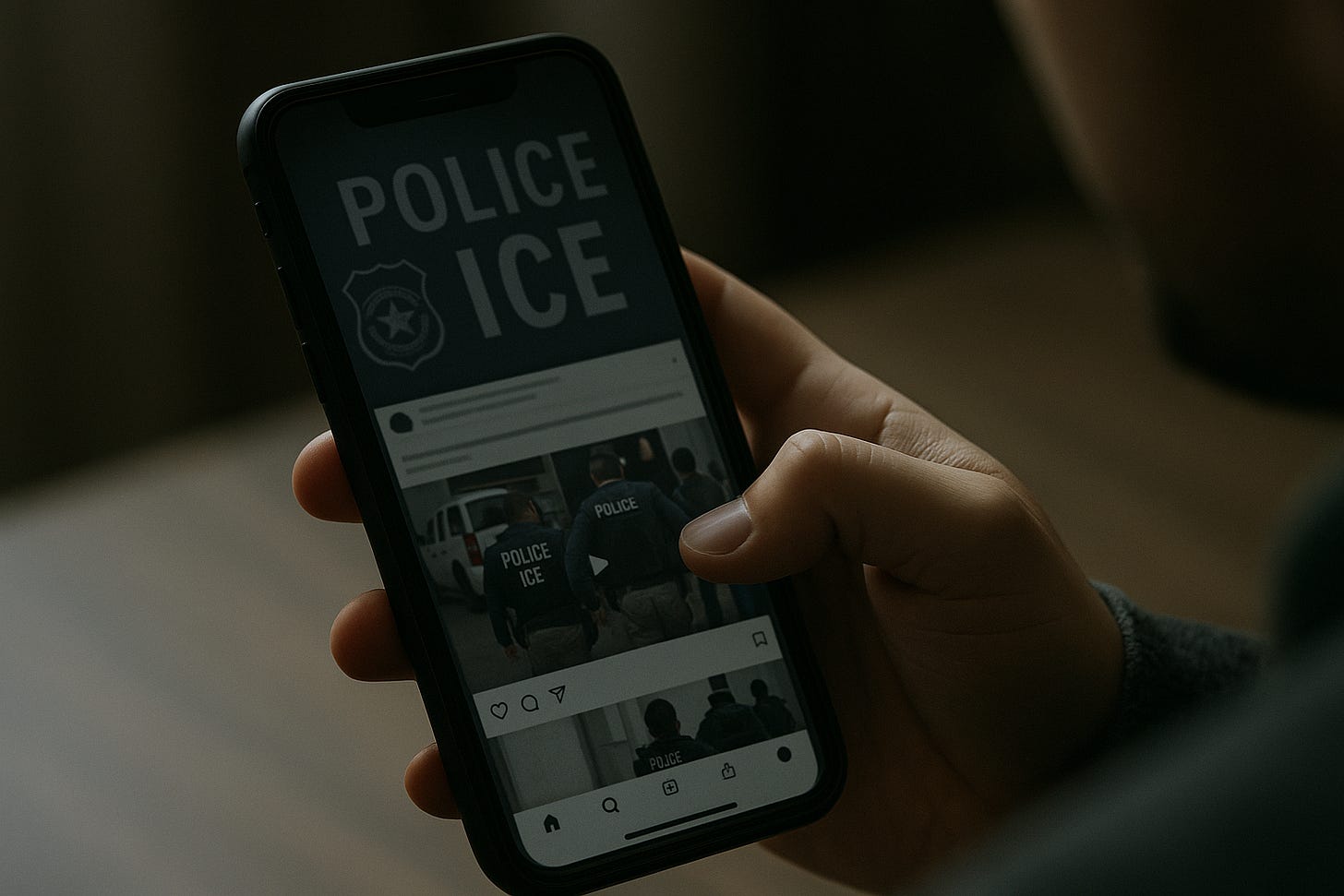The ICE List is a public database that documents the actions of U.S. Immigration and Customs Enforcement (ICE), its contractors, and its collaborators. Built by us at the Crustian Daily, and built with the help of the wider public, through community submissions, OSINT research, and FOIA requests, the project exposes ICE operations and brings accountability to an agency that thrives on secrecy.
ICE is known for carrying out raids, kidnappings, and legally dubious detentions that tear families apart and target immigrant communities. Human Rights Watch have repeatedly documented abuses ranging from unlawful detentions to neglect in detention centers. Our work opposes this machinery of fear by making its actions visible and undeniable, and recording the individuals responsible. The precedent set by the Nuremberg trials remains true, it is not merely the leaders of a regime who are responsible for human rights abuses, but also the individual who fulfilled the order. We are dedicated to upholding that precedent.
Our next step is upon us, we are expanding the work into dozens of teams, starting with 51 localised teams, one in every state and Washington D.C. These teams will form the backbone of the project, gathering local knowledge and expertise to strengthen the accuracy of our database. The move will hopefully lead us to getting to an identity faster than we could before.
Each of the 51 local teams will focus primarily on social media monitoring and local verification. Volunteers will:
Scroll through social media for videos of ICE activity in their state.
Fill in standardised sheets noting details such as dates, times, license plates, uniforms, accents, and locations.
Share those findings back with the larger project.
When videos from a state are identified, they will be sent into that state’s group for further review. Local knowledge is critical, what might be unrecognizable to a national audience may be obvious to someone who lives nearby. As soon as we have enough data to confirm the location of the arrest, we can send this information onto our FOIA team, who will submit a request in an attempt to find out more details, hopefully including the names of any agents involved.
Our goal is that, over time, each team becomes strong enough that when new footage comes in, it can be identified and verified almost immediately.
Alongside the 51 state groups, several national-level teams will handle specialised work:
OSINT Team: Dedicated open-source researchers working to uncover connections, identities, and patterns in ICE activity.
FOIA Team: Focused solely on filing and tracking Freedom of Information Act requests, ensuring government documents are released into public view.
Legal Team: Providing guidance on accountability, legality, and the broader implications of ICE actions.
These specialised teams support the state groups but remain separate, giving volunteers clear pathways to contribute based on skills and interest.
For now, communications remain centralised to ensure consistency and protection. Technical skills such as database management, graphic design, and infrastructure are being kept in-house due to security risks, specifically the need to avoid U.S.-based subpoenas that could compromise the project.
Building Ground Teams
Ground teams are the most ambitious next step. Ideally, every state would develop its own, though we recognise this will take some time. For now, ground teams will focus primarily on outreach, connecting with communities, immigrant justice groups, and local organisations. We would like to have rapid response teams to show up at raids to take photos, but most of the ground work will centre around outreach until we have the numbers to discuss more effective methods.
In the long run, ground teams may:
Observe ICE operations safely and document details.
Verify local activity and cross-check with online submissions.
Share alerts and warnings with vulnerable communities.
Print and display posters of the ICE List.
Inform people in the local area of the list.
Talk to anti-ICE business owners about possible use of CCTV.
For now, they will be a point of connection, building the trust and networks that will eventually make this possible, but in the near future, we hope to see this grow into a widespread, effective tool to document ICE, and ideally, will become a core aspect of the work that we do.
Why You Should Join Us
Every action ICE takes relies on secrecy and intimidation. By joining the ICE List effort, you help dismantle that secrecy. Whether by scrolling short videos online and noting details in a spreadsheet, or by helping us on the ground, your contribution chips away at ICE’s ability to act without scrutiny.
Join Your Local Team: Even just scrolling social media and filling in a sheet is invaluable.
Contribute Skills: If you have OSINT, FOIA, or legal expertise, there is a place for you in our specialized teams.
Spread the Word: Awareness grows the project. Share the ICE List with your networks.
Submit Tips: If you have first-hand information, videos, or documents, send them through our secure channels.
For more on what you can do outside of our efforts, visit National Immigration Project or Detention Watch Network.
For more tools to fight against ICE, check out some of the work done by our fellow activists:
The ICE List is only as strong as the community behind it. With 51 state teams, national expertise, and ground-level outreach, we are building a network capable of challenging ICE secrecy head-on. Join us today and help us bring light where ICE wants only shadows.



